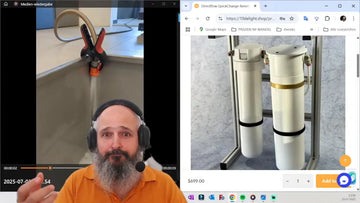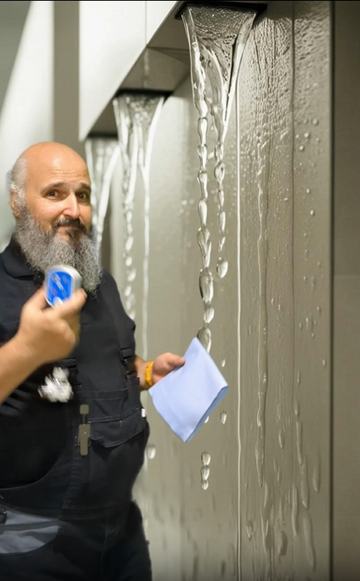Choosing the Right Glass for Your Indoor Waterfall
Choosing the Right Glass for Your Indoor Waterfall
Hello and welcome! My name is Markus, and I'm the founder of 10 Delight Waterfall Systems. Today, I want to share with you the types of glass you should consider and avoid when building your own indoor waterfall.
Types of Glass to Avoid
First, let’s discuss the types of glass you don’t want to use:
1. Float Glass
Float glass is a simple type of glass that can break into sharp edges. This poses a safety risk, especially if your indoor waterfall is in a public area or around family and children. If this glass breaks, sharp pieces can fall and potentially hurt someone. While float glass can be used for test setups in your workshop, I advise against using it for long-term installations meant to run over an extended period.
2. Laminated Glass
Laminated glass consists of two slabs with a foil between them for safety. While it prevents sharp edges if broken, over time, water can seep into the gaps, leading to unsightly branches forming inside the glass. This is particularly problematic if your installation is meant to last for years. However, for temporary setups or exhibitions, laminated glass can be used as the water intrusion takes time to develop.
3. Impregnated Glass
This type of glass has a treated surface that creates a Lotus effect, repelling water. This is undesirable for waterfalls as it prevents the formation of a smooth water film, which is essential for the aesthetic appeal of your waterfall. To achieve a calming and beautiful effect, you need a consistent water flow over the glass surface.
4. Milky Glass
Some may prefer milky glass for its opaque appearance, but this can reduce the visibility of water waves. When the glass appears white, the contrast needed to see the beauty of the water waves is diminished. From a distance, the water movement may be almost invisible, which defeats the purpose of having a waterfall.
Recommended Glass Types
Now that we’ve covered what not to use, let’s talk about the types of glass that are suitable for your indoor waterfall:
1. Tempered Glass
Tempered glass is the best option for your waterfall. It is stronger than regular glass and is designed to shatter into small, blunt pieces rather than sharp shards, which enhances safety.
2. Heat Soak Test
In addition to using tempered glass, it’s crucial to have it undergo a heat soak test. This process exposes the glass to high temperature differences to ensure it won’t break under normal conditions. If it passes this test, the risk of spontaneous breakage is significantly reduced.
3. Polished Edges
The edges of your glass slab should be polished and chamfered. This not only enhances the aesthetic appeal but also reduces the risk of injury from sharp edges.
4. Size Considerations
Finally, ensure that the total size of your glass slab matches the width of your overflow channel. For instance, if your overflow channel measures 1,000 mm, your glass slab should also be 1,000 mm wide. This ensures a seamless integration and functionality in your waterfall design.
Final Thoughts
I hope this information helps you make the right choices for your indoor waterfall project. If you have further questions about sizes, thickness, or any other details, feel free to book a free consultation with me through our website. I can assist with planning, functionality, water treatment, and design.
Thank you for joining me today! Please subscribe to my channel for more insights, and don’t hesitate to reach out if you need assistance with your indoor waterfall project.
Free 30min Consulting With Markus
Need Help For Your Project?
Click Here To Book A Free 30min Meeting





